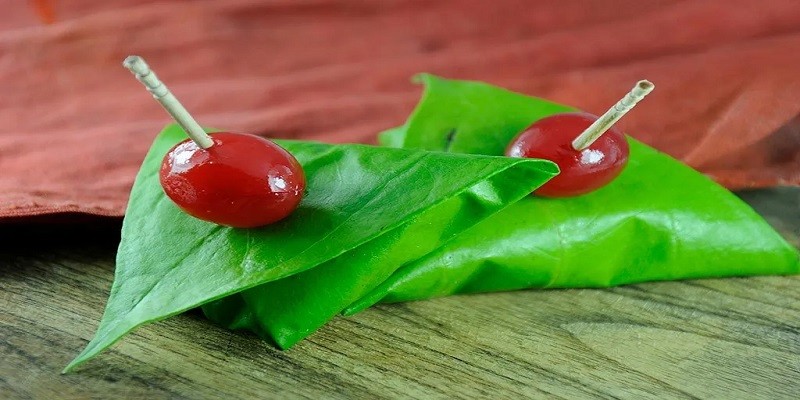Last Updated on July 25, 2024
No, it is generally not recommended to eat pan (betel leaf) during pregnancy. While pan has some nutritional benefits, it also carries significant risks for pregnant women and developing fetuses. Most health experts advise avoiding pan consumption during pregnancy due to potential complications like low birth weight, preterm labor, and birth defects. Safer alternatives should be considered to satisfy cravings.
Pregnancy is a crucial time when women need to be extra cautious about their diet and lifestyle choices. One common question that arises, especially in cultures where pan (betel leaf) consumption is prevalent, is whether it’s safe to eat pan during pregnancy. This article explores the potential risks and benefits of pan consumption during pregnancy, providing evidence-based information to help expectant mothers make informed decisions about their dietary habits.
What is Pan?
Pan, also known as betel leaf, is a vine leaf commonly chewed in many parts of South and Southeast Asia. It is often combined with areca nut, slaked lime, and sometimes tobacco to create a stimulant mixture known as “paan.” Pan has been used traditionally for its supposed medicinal properties and as a mouth freshener. However, its consumption, especially during pregnancy, has raised concerns among health professionals due to its potential adverse effects on maternal and fetal health.
Nutritional Value of Pan
| Nutritional Value | Details |
|---|---|
| Vitamins | Contains vitamin C, thiamine, niacin, riboflavin |
| Minerals | Rich in calcium, potassium, iron |
| Antioxidants | Contains polyphenols and terpenes |
| Fiber | Good source of dietary fiber |
| Calories | Low in calories |
Risks of Eating Pan During Pregnancy
| Risks | Details |
|---|---|
| Low birth weight | May lead to reduced fetal growth and development |
| Preterm labor | Increased risk of premature birth |
| Birth defects | Potential for congenital abnormalities |
| Oral cancer | Long-term use associated with increased cancer risk |
| Addiction | Can lead to dependence and withdrawal symptoms |
| Nutritional deficiencies | May interfere with nutrient absorption |
Safe Ways to Eating Pan During Pregnancy
While it’s generally advised to avoid pan during pregnancy if you must consume it, consider these safer alternatives:
- Opt for plain betel leaves without any additives like tobacco or areca nut.
- Limit consumption to occasional use rather than regular intake.
- Consult with your healthcare provider before including pan in your diet.
- Choose fresh, clean leaves and wash them thoroughly before consumption.
- Be aware of any adverse reactions and discontinue use if you experience any discomfort.
Remember, the safest option is to avoid pan entirely during pregnancy to minimize potential risks to you and your baby.
Alternatives to Pan During Pregnancy
| Alternatives | Precautions |
|---|---|
| Fresh fruits | Wash thoroughly before consumption |
| Herbal teas | Avoid caffeine-containing teas |
| Sugar-free gum | Use in moderation |
| Mint leaves | Ensure they are pesticide-free |
| Fennel seeds | Consume in small quantities |
Expert Tips
- “Pregnant women should avoid pan consumption due to its potentially harmful effects on fetal development and maternal health.”
- “If you’re craving pan, try safer alternatives like fresh fruits or sugar-free gum to satisfy your urge.”
- “Regular dental check-ups are crucial for pregnant women, especially those with a history of pan consumption.”
FAQs
Is it safe to eat sweet pan during pregnancy?
While sweet pan may seem harmless, it’s still not recommended during pregnancy. The added sugars and artificial flavors can contribute to gestational diabetes and excessive weight gain. Additionally, the betel leaf itself may carry risks for fetal development. It’s best to avoid all forms of pan during pregnancy.
Can eating pan cause miscarriage?
There is no direct evidence linking pan consumption to miscarriage. However, some studies suggest that the chemicals in pan, particularly when combined with tobacco or areca nut, may increase the risk of pregnancy complications. To err on the side of caution, it’s advisable to avoid pan during pregnancy.
How long after delivery can I start eating pan again?
It’s recommended to wait until after you’ve finished breastfeeding before resuming pan consumption. The chemicals in pan can pass through breast milk and potentially harm your baby. Consult with your healthcare provider for personalized advice based on your specific situation.
Are there any benefits to eating pan during pregnancy?
While pan contains some vitamins and minerals, the potential risks outweigh any nutritional benefits during pregnancy. There are safer and more nutritious alternatives available to meet your dietary needs. Focus on a balanced diet rich in fruits, vegetables, and whole grains instead.
What should I do if I’ve been eating pan during my pregnancy?
If you’ve been consuming pan during your pregnancy, don’t panic. Inform your healthcare provider about your pan consumption habits. They may recommend additional monitoring or tests to ensure your baby’s health. Moving forward, it’s best to discontinue pan use for the remainder of your pregnancy.
Conclusion
While pan has been a part of cultural traditions for centuries, its consumption during pregnancy poses potential risks to both the mother and the developing fetus. The safest approach is to avoid pan entirely during pregnancy and opt for healthier alternatives to satisfy cravings. Always consult with your healthcare provider for personalized advice regarding your diet during pregnancy. Remember, the goal is to ensure the best possible health outcomes for you and your baby.

